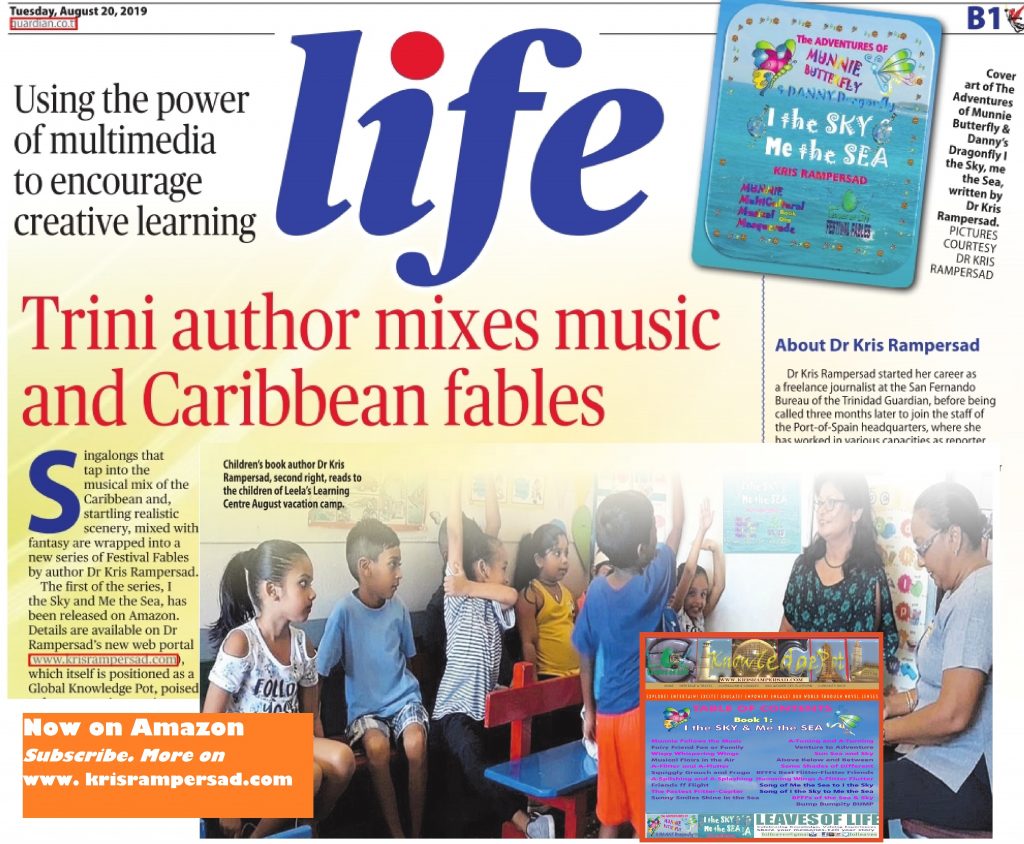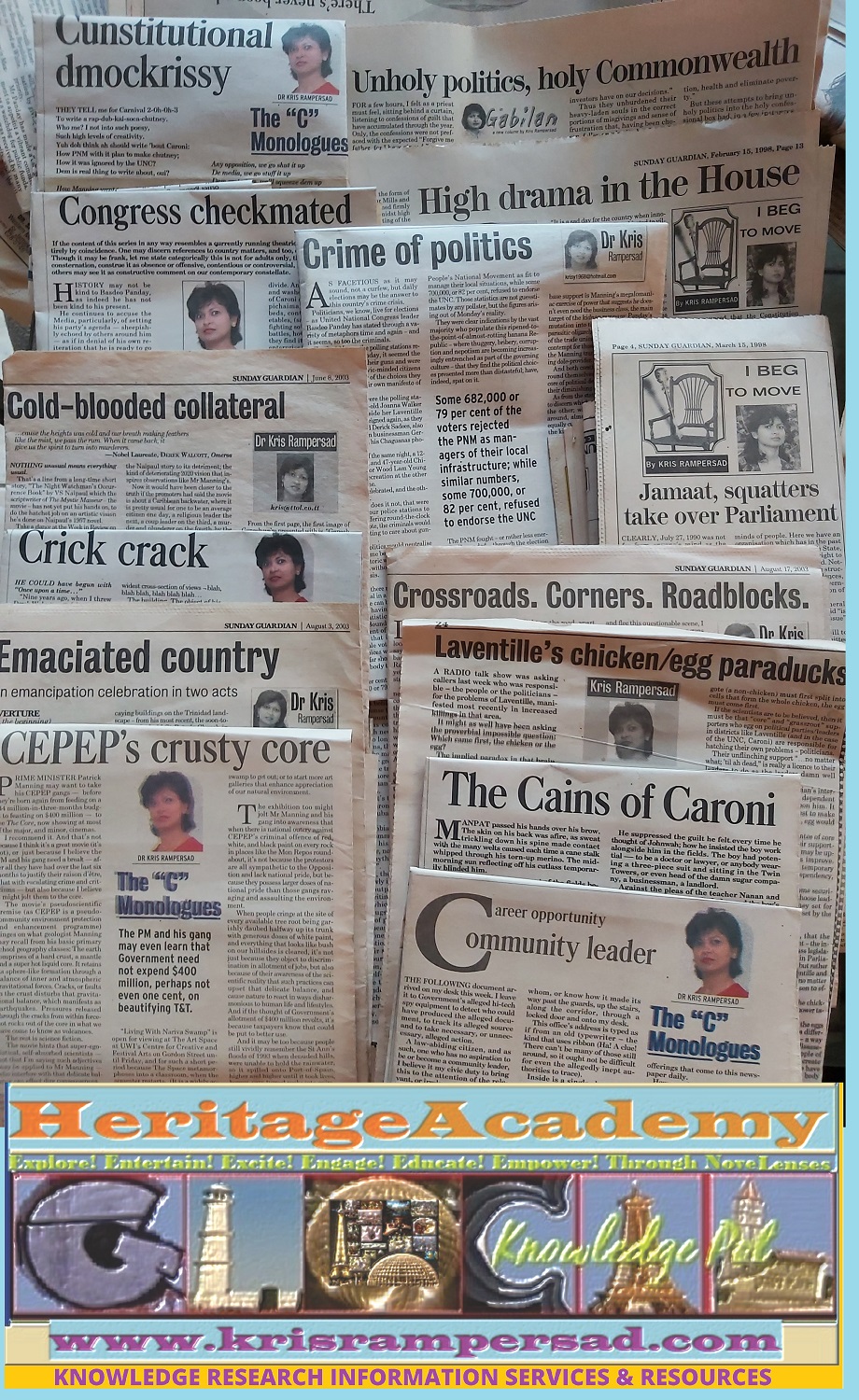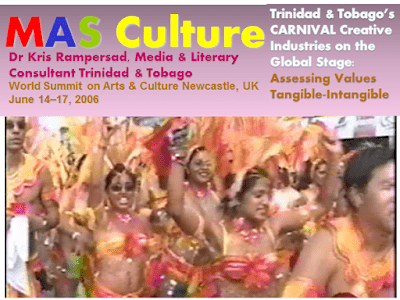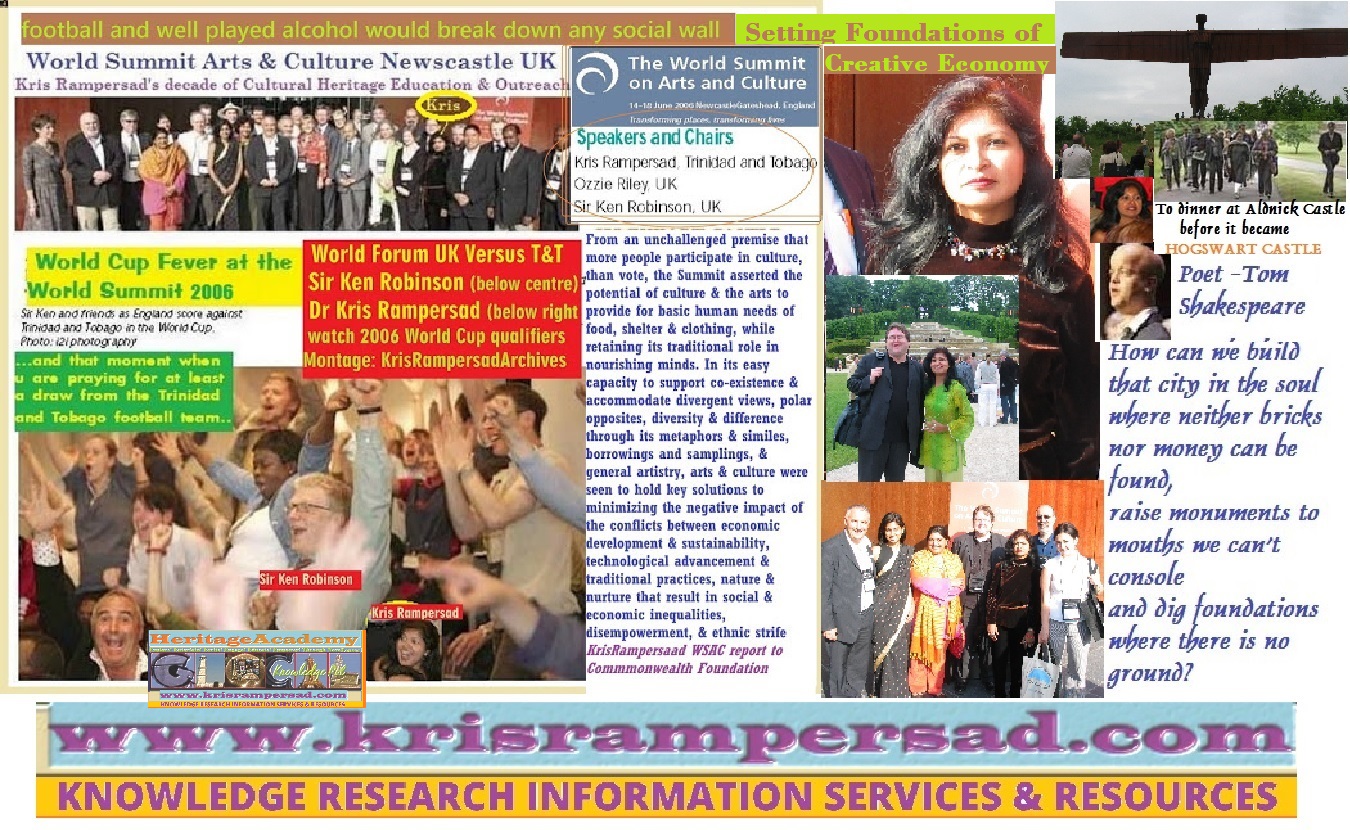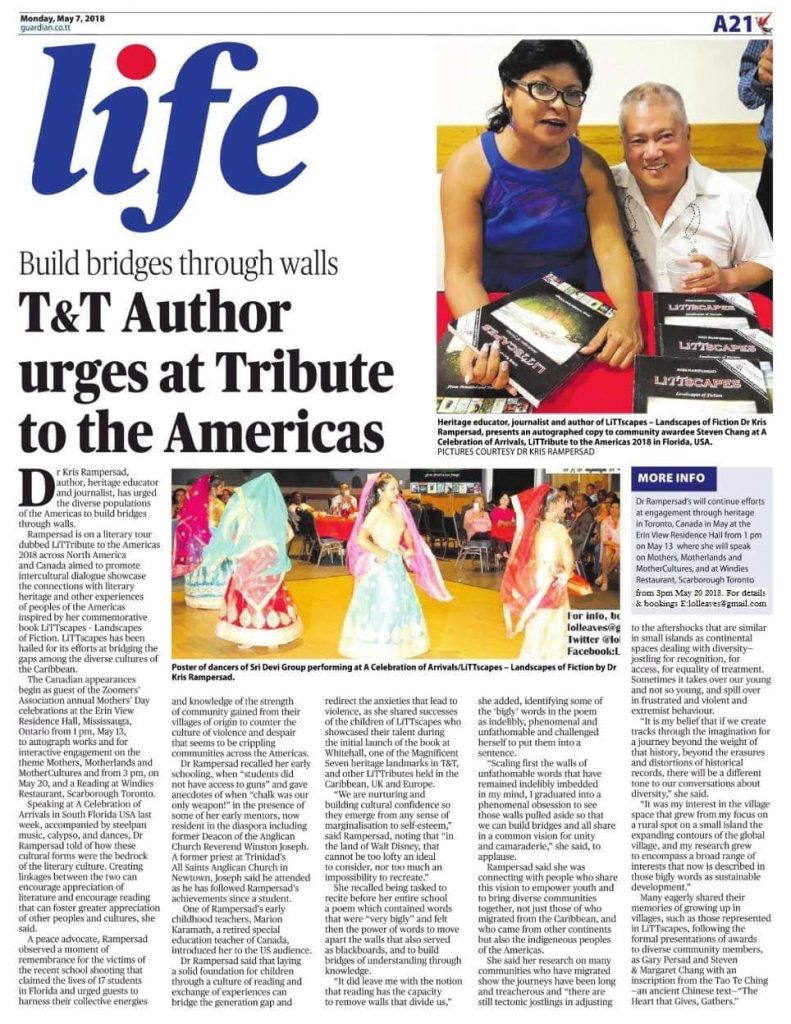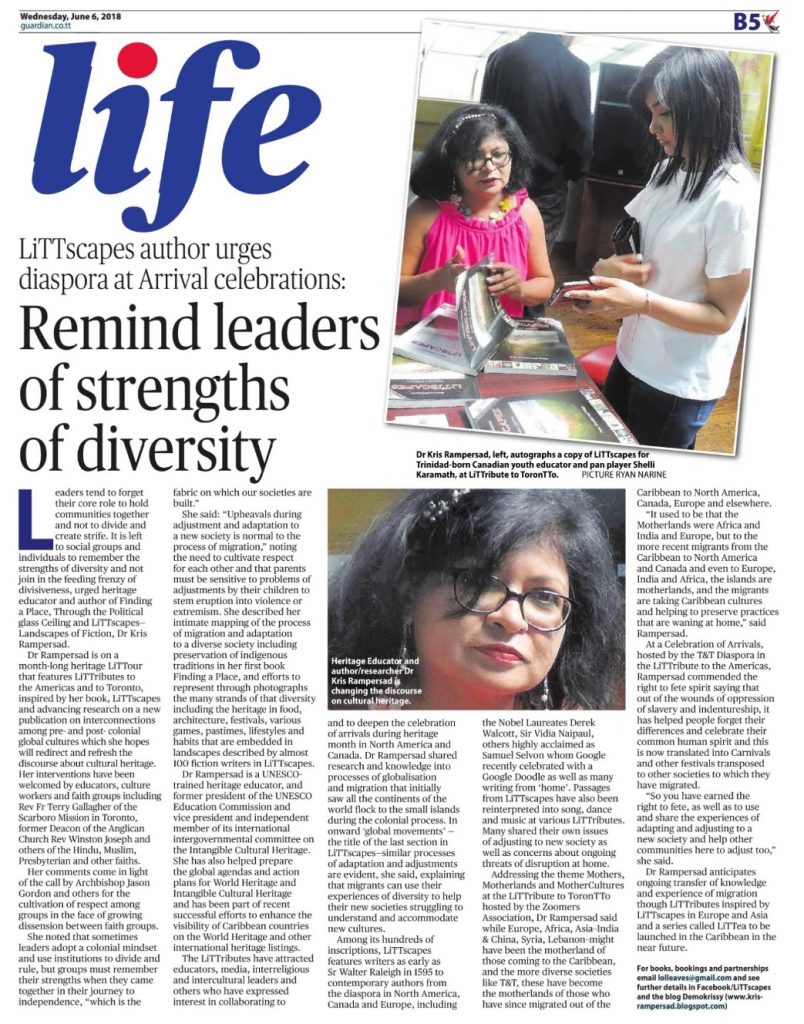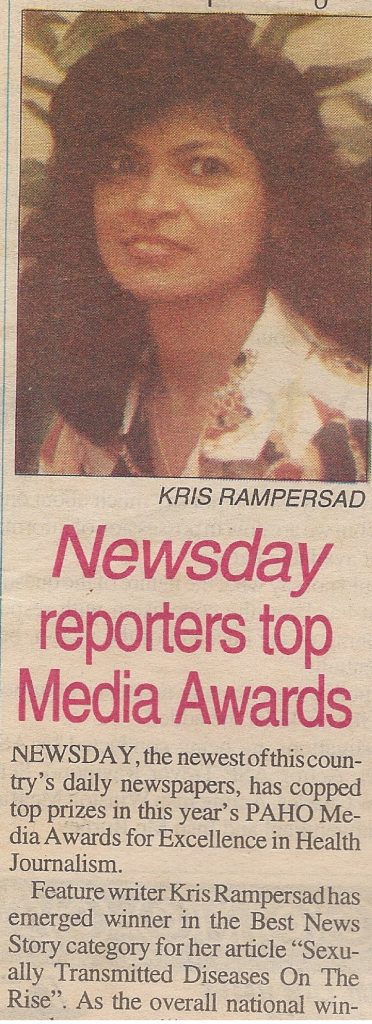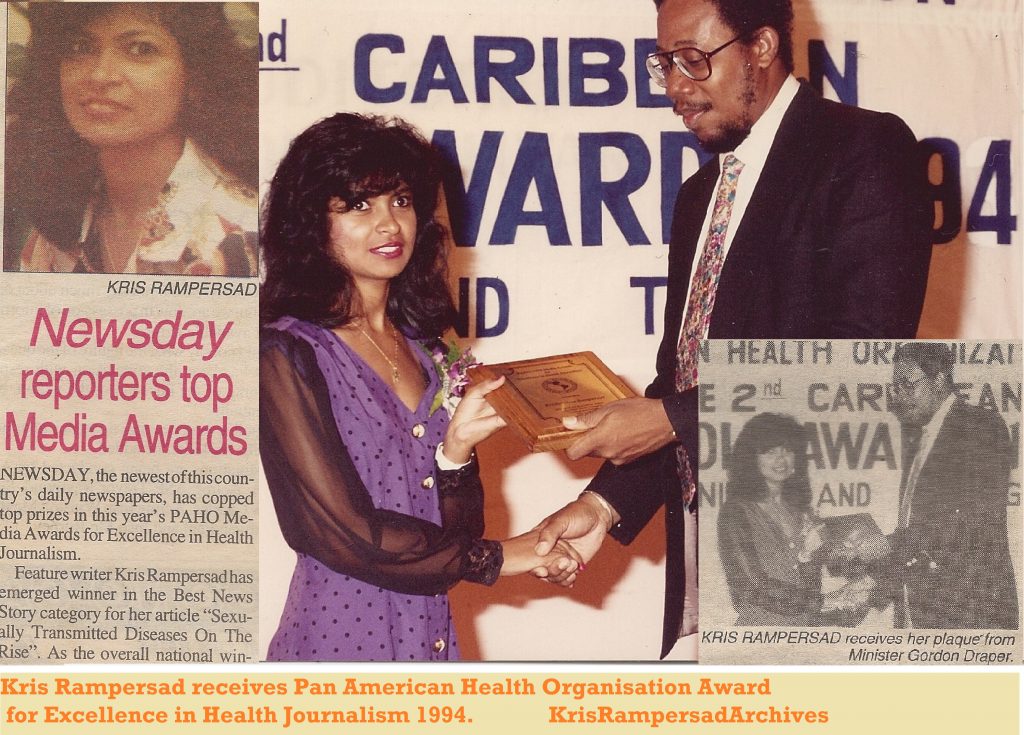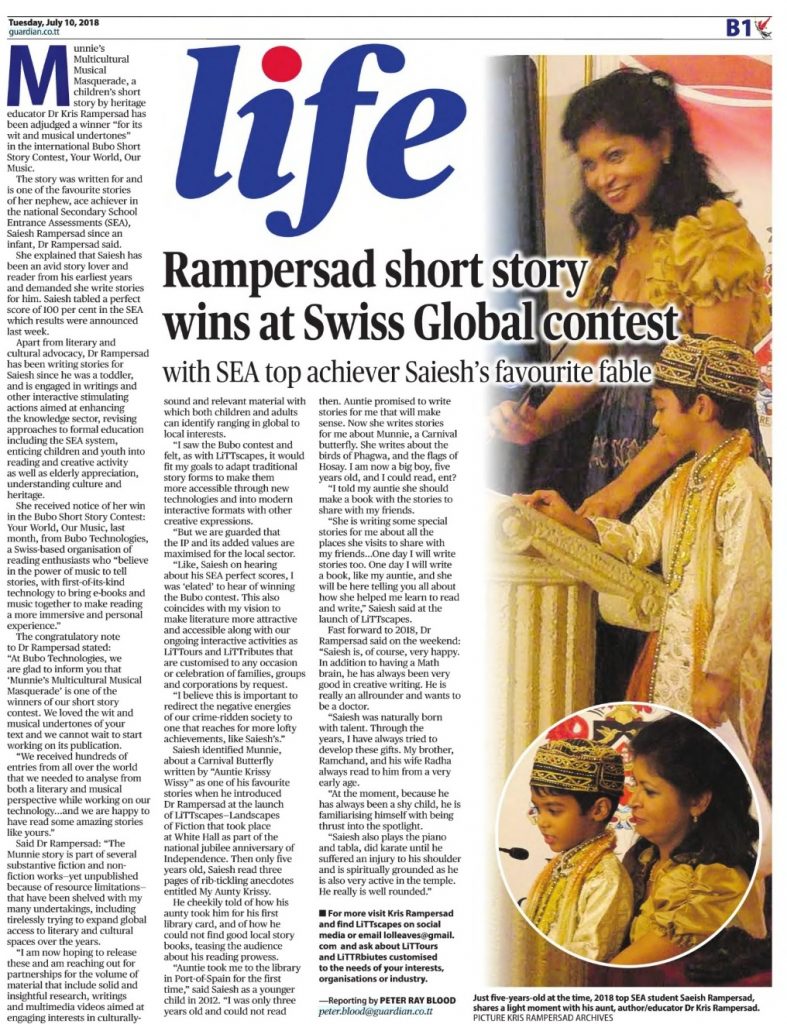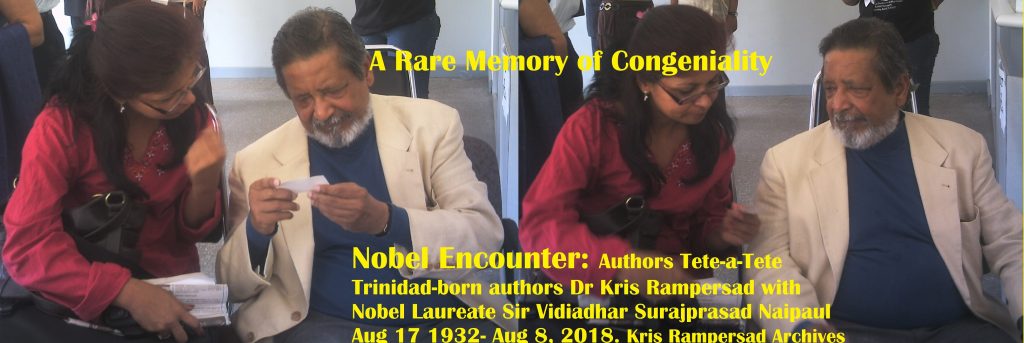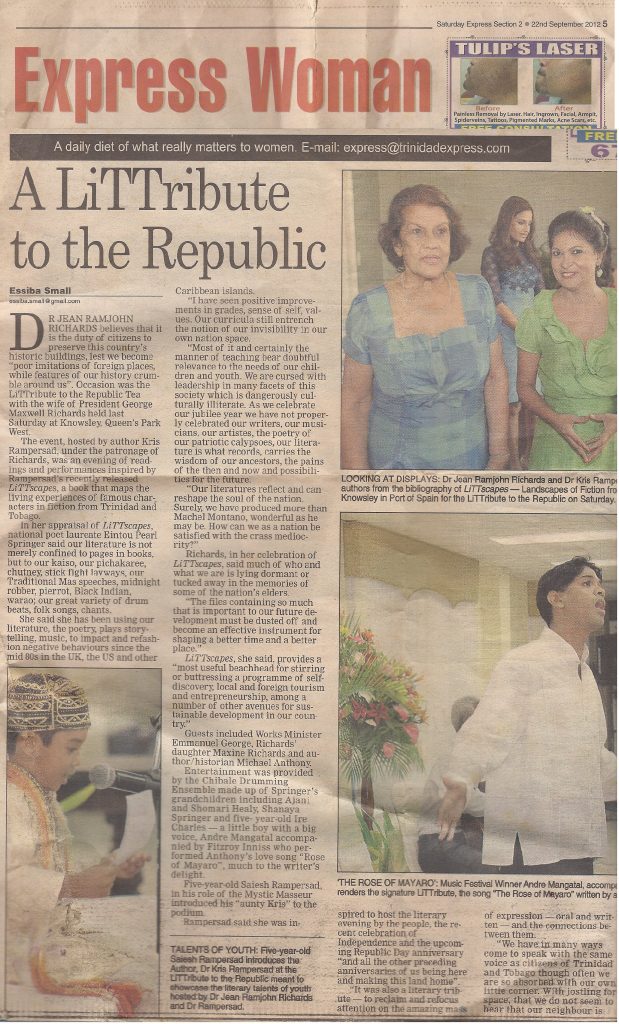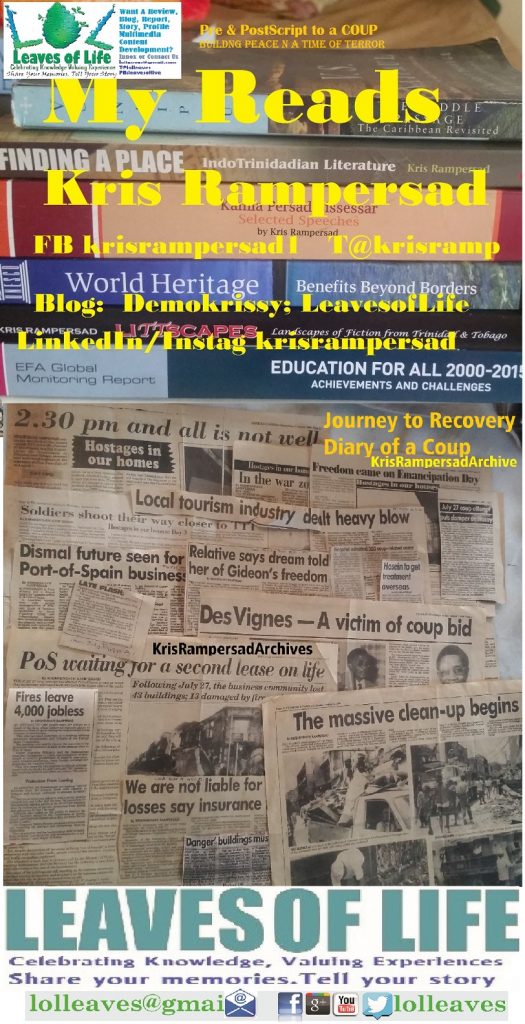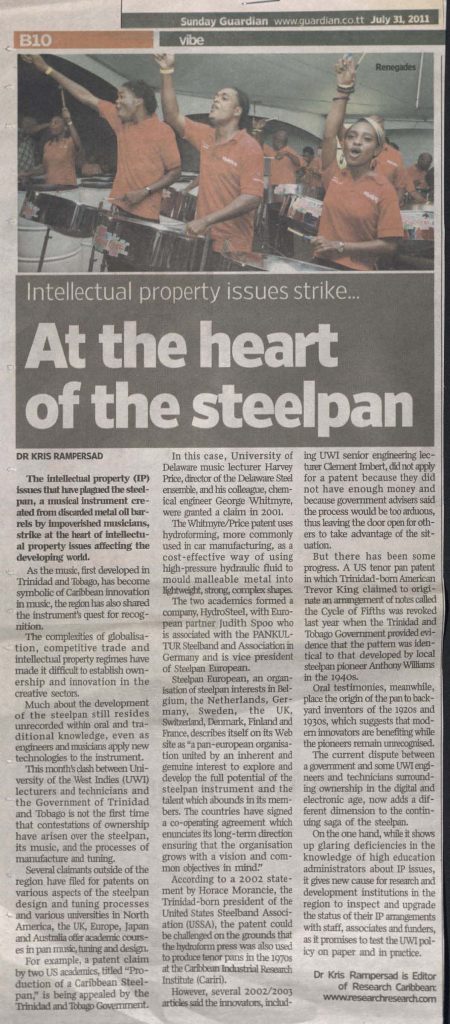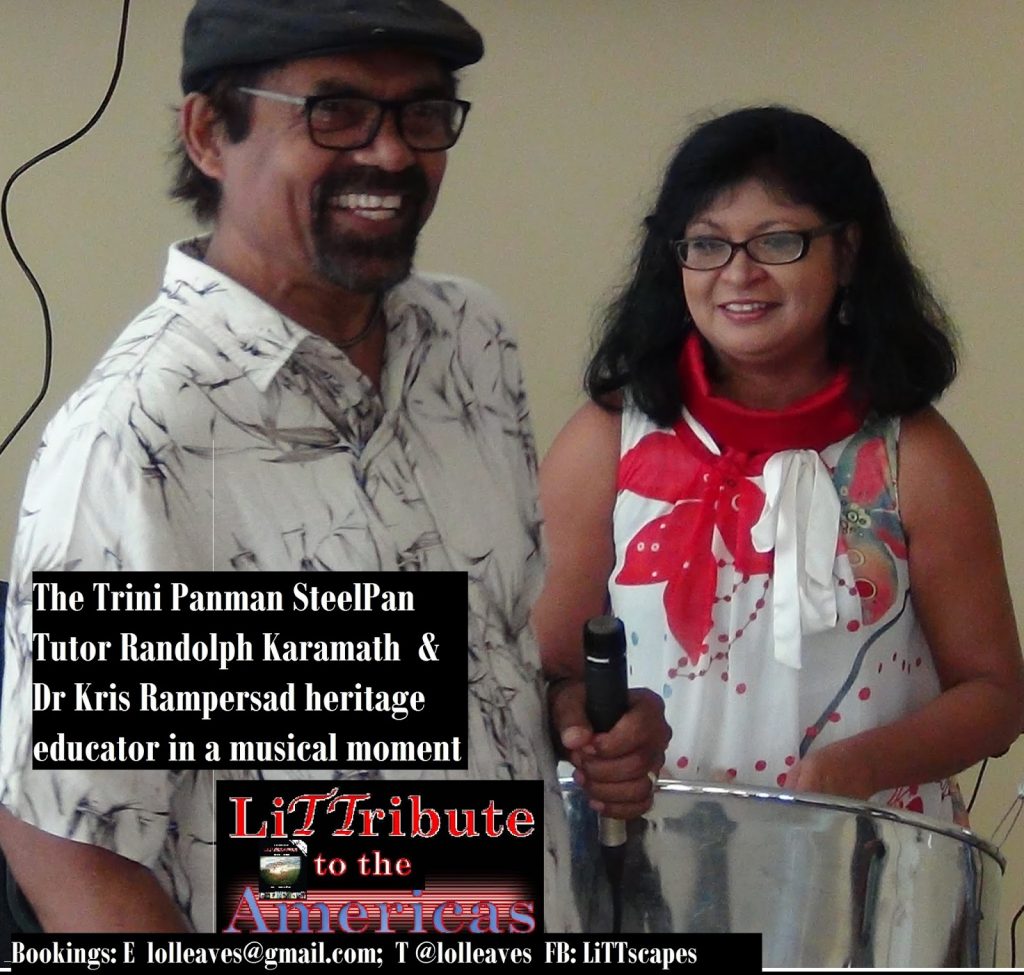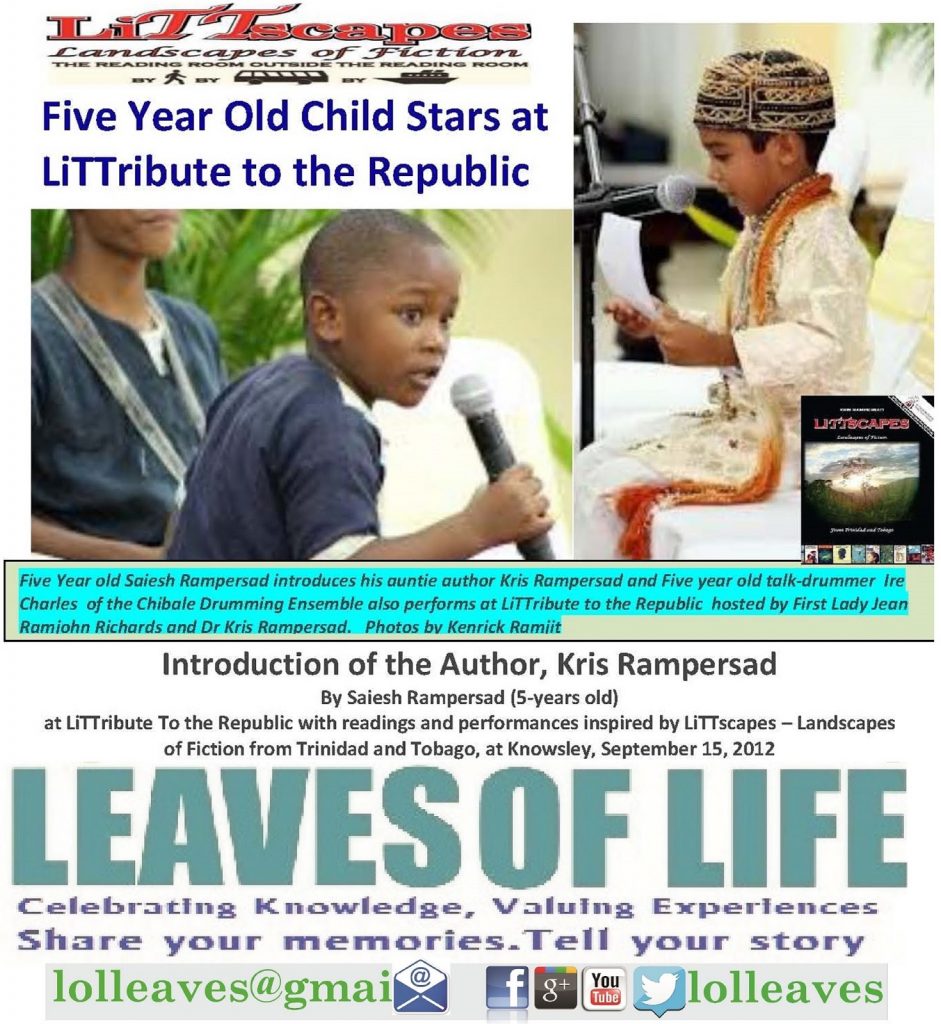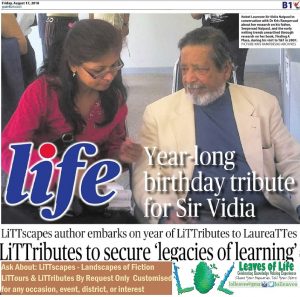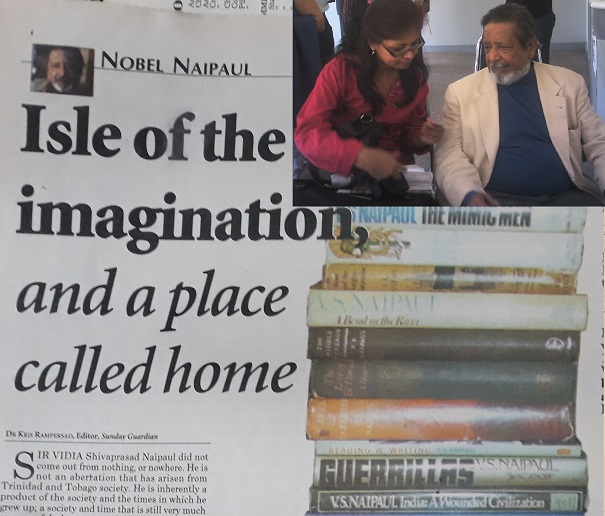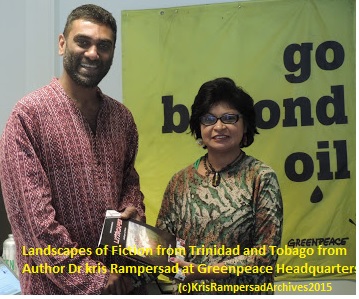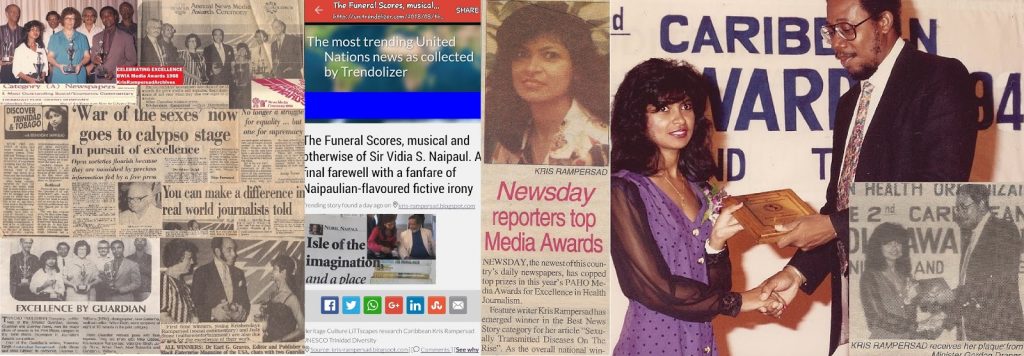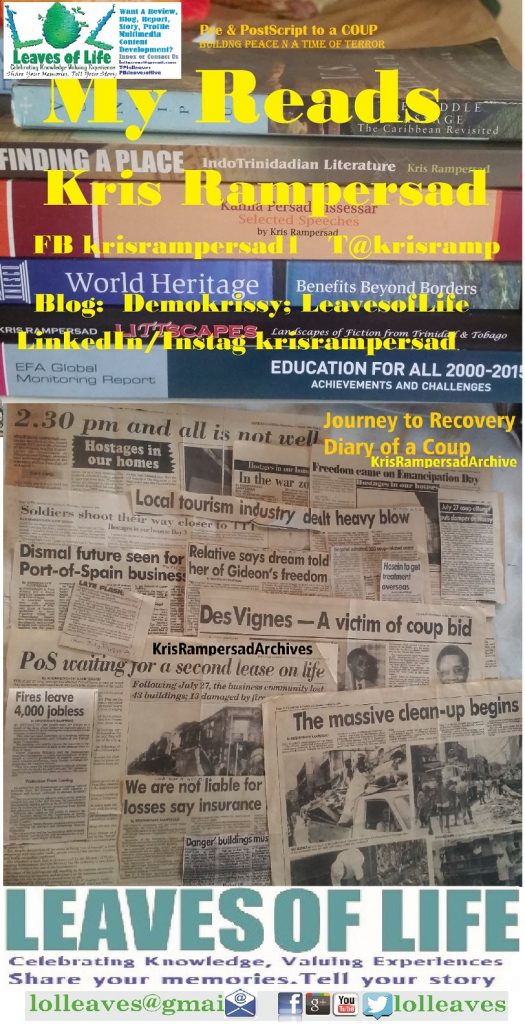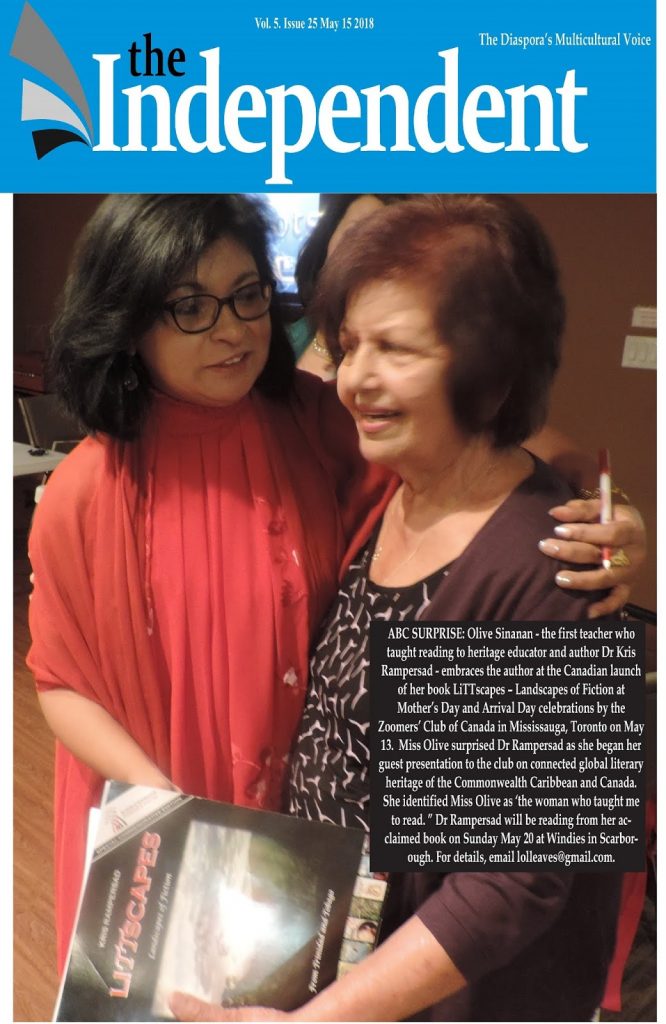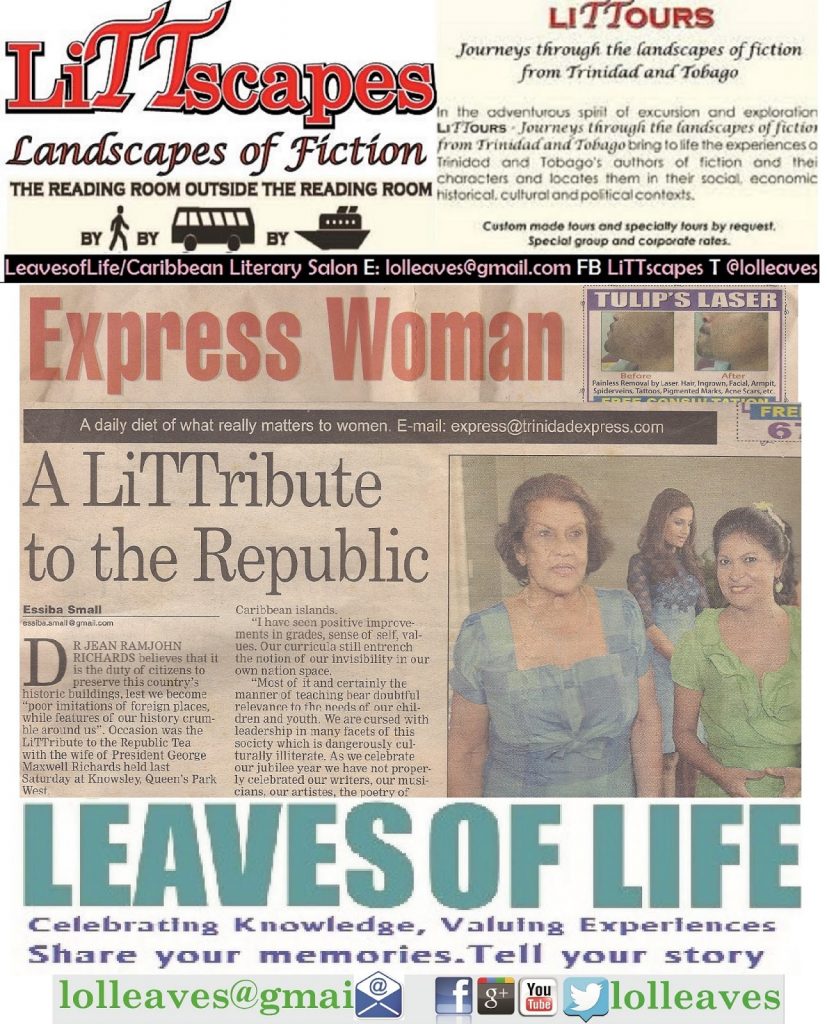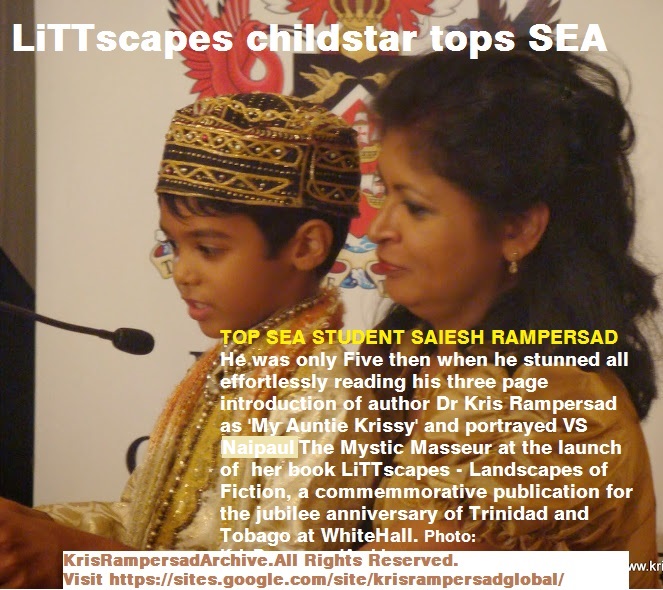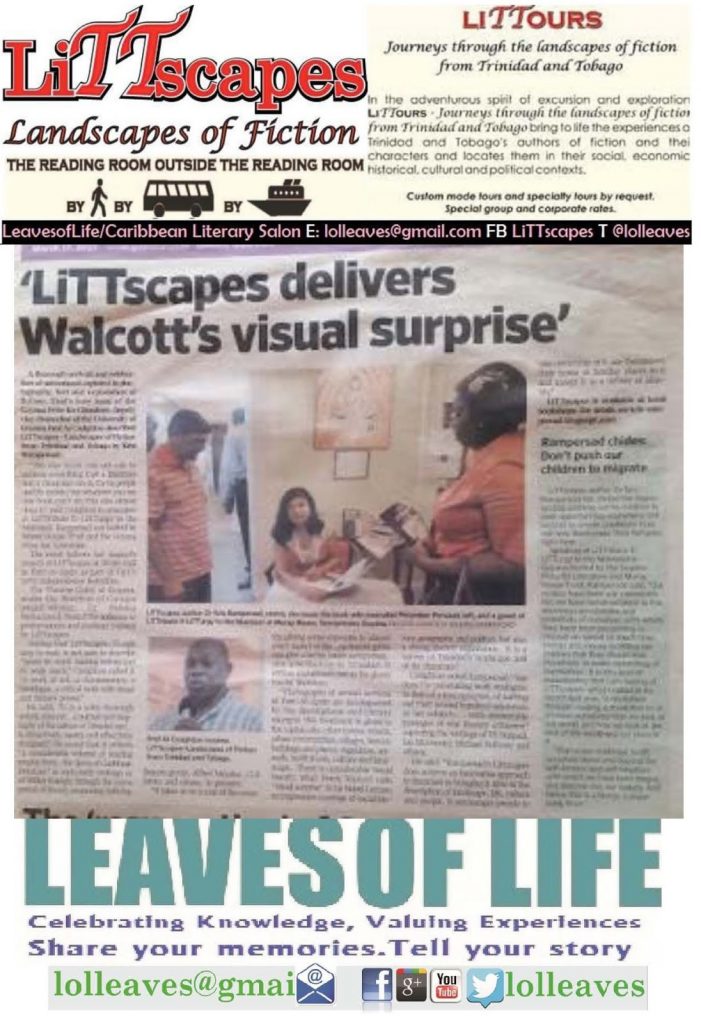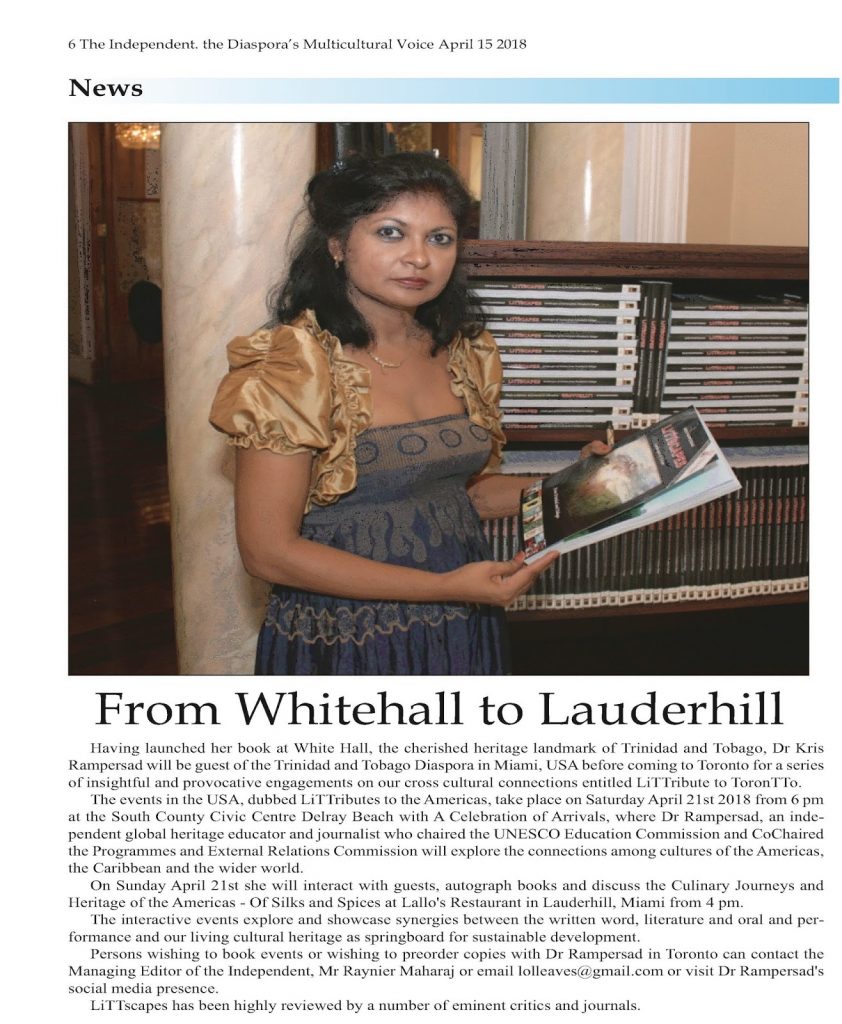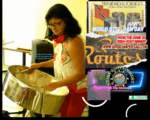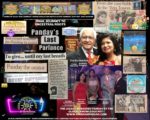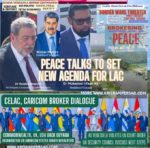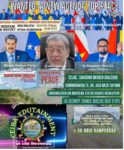
For all my adult life I have been involved in creating and making the news product that people consume. But occassionally, I have become the fodder as a newsmaker in the meaning of the term of today’s social media.
Here are some insights in what my critics say.
On The Caribbean Literary Salon
The verse from Howard Fox is also a tribute to the Caribbean Literary Salon which I administered and has now moved to this platform, and which Howard said helped hone his literary talents.
Kris’ Critics
No one book can set out to achieve everything that a text can do for its people and its nation; but whatever you say one book can’t do, this one almost does it…. Littscapes is a work of art; but also a documentary, a travelogue, a critical work with visual and literary power. .. an innovative approach to literature … considerable visual beauty, what Derek Walcott calls “visual surprise”
Professor Al Creighton, Guyana Prize for Literature & Deputy Vice Chancellor, University of Guyana
Dr Rampersad, looking incongruently girlish the evening of the launch, among heavyweight university academics asserting that we all have only a partial view of the world based on our individual experiences and influences, which is why we each need to write our stories so we can understand one another.
Ira Mathur
(Kris) Rampersad explained that … LiTTours demonstrate how such historic heritage elements can be put to use, stimulate economic activity and generate income for the district, while contributing to the upkeep of the buildings
Trinidad Guardian
Let’s build something together.
Reviews On Kris Rampersad’s works
Martin Mulligan Reviews LiTTscapes – Landscapes of Fiction by Kris Rampersad in The Commonwealth Journal of International Affairs

https://www.tandfonline.com/doi/abs/10.1080/00358533.2013.876840?j
Feature: Inaugural LiTTour initiates literary heritage tourism in two districts
Sunday, October 7, 2012

At least two communities have committed to taking charge of their heritage elements following the inaugural LiTTour – Journeys Through the Landscapes of Fiction from Trinidad and Tobago – last week.
The Mayaro Historical Society has committed to take actions for completing renovations of the historic old Mayaro Post Office, including setting up a restoration fund, “rather than sit and wait” as they have been for some eight years for some other body to repair the building.
This breakthrough follows a meeting with participants in the inaugural LiTTour, led by author Kris Rampersad, who offered suggestions on how the community could move forward to realise plans for the building while engaging with other bodies and authorities in the effort.
The building is identified as part of the literary heritage of the island in Rampersad’s book LiTTscapes – Landscapes of Fiction from Trinidad and Tobago and elsewhere.
“We have received some sound ideas from this visit and are ready to move forward”, local historian and author, Michael Anthony, who accompanied the tour and has been championing restoration of the building for the last 30 years, said.
Rampersad explained that Mayaro became the destination of the LiTTour to demonstrate how such historic heritage elements can be put to use, stimulate economic activity and generate income for the district, while contributing to the upkeep of the buildings. The old post office is featured as an important literary house as the settings of many of Anthony’s stories in LiTTscapes. LiTTours are being conducted in collaboration with the Public Transport Service Corporation’s Know Your Country Tours.
During the LiTTour, which included readings from works like Sandra Street, Green Days by the River and A Year in San Fernando, Anthony also gave insights into the Mayaro settings of his stories and literary characters.
Meanwhile, Sangre Grande was also a PiTTstop for participants in the inaugural LiTTour.
Chairman of the Sangre Grande Regional Corporation Keshwar Maharaj welcomed the LiTTour, hailed it as a boost for the district’s heritage tourism thrust, and announced plans to restore the former Sangre Grande Post office to serve as a museum of the history of Sangre Grande. The old Grande Post Office is also featured as one of the district’s significant historic heritage buildings in LiTTscapes and residents have voiced concerns about its state of disrepair. Maharaj also announced plans for a literary heritage activity centre within the corporation’s new administrative centre.
In Sangre Grande, local scouts read selections about the district from LiTTscapes and the novel Between Two Seasons by painter/author James Isaiah Boodhoo ’s. Author Michael Anthony shared personal memories and insights about the district.
Other participants in the LiTTour included renown sketch artist Anthony Timothy who sketched aspects of the journey, head of the Ministry of Work’s Historical Restoration Unit, Rawle Mitchell; Gia Gaspard Taylor of the Rural Women’s Network; conservationist journalist Heather Dawn Herrera among others.
Customised and other LiTTours are available through requests to lolleaves@gmail.com LiTTscapes is available at local bookshops and details through www.krisrampersad.com. https://jyoticommunication.blogspot.com/2012/10/feature-inaugural-littour-initiates.html
Ira Matur Reviews Kris Rampersad’s Book
At first glance, its cover with photographs of Sam Selvon, Lakshmi Persaud, VS Naipaul, Seepersad Naipaul, Shiva Naipaul, Stella Abidh, Shani Mootoo and FEM Hosein suggests Dr Kris Rampersad’s newly-launched book ‘Finding a Place – IndoTrinidadian Literature’ is a literary critique of these writers and their work.
In fact, the fading newspapers beneath the photographs suggest a more subtle and compelling connection. Dr Rampersad’s ground breaking work is built around little known and rare publications produced by IndoTrinidadians over a hundred years (1850-1950) – The East Indian Advocate, Herald, Patriot, Weekly, Observer, Presbyterian, Koh-i-noor Gazette among others. It unearths lost chunks of our history, presses us to rethink the Indian experience in the New World, and lights up through her research the lost and faded pioneers of IndoTrinidadian writing.
“It was in the (East Indian) Weekly,” she writes in chapter five, “that the first writers found an outlet for their wish to write. Through its reports and focus, they found the subjects and themes that would dominate later creative fiction.
“The issues of adaptation to a new society, cross-culturation, the struggle for promotion and acceptance, acquiring wealth, biracial marriages… later became subjects and themes for the creative fiction of IndoTrinidadians.”
In her introduction, the author asserts that her book, which quotes articles, letters to the editor and editorials from rare, lost or forgotten publications, “maps a process of literary development.”
She writes: “It becomes obvious from this study that a writer like VS Naipaul did not arise as an aberration, but from realities within the society in which he grew up. The desire to write came out of a century-long tradition of yearning and aspiring towards that goal, within which was encapsulated the need to be understood and accepted by the society which was now being claimed as home.”
I had seen Dr Rampersad, looking incongruently girlish the evening of the launch, among heavyweight university academics asserting that we all have only a partial view of the world based on our individual experiences and influences, which is why we each need to write our stories so we can understand one another.
Although Finding a Place is rooted in academia, it reads like investigative journalism at its cutting edge. The writing is lively with evocative images, plump with analysis and context, (so that in some ways it is a one-stop shop for the history of the IndoTrinidadian’s experience in the New World) and the material as fascinating as unexpectedly discovering fading letters of a grandparent and seeing them in their youth.
“The book began with a vague notion, a philosophical position, that of understanding how the many strands of our society have evolved. After that, I looked at the Koh-i-noor Gazette which was one of the few of the 12 publications available in the National Archives,” Dr Rampersad said later in an interview.
“A whole lot has disappeared. When I was looking for material, people would say ‘we just moved and threw away old papers.’ I didn’t locate The Herald and The Patriot until the end of the study, then I had to redo other chapters to accommodate the new material.
“Practically all the issues raging in the 1860’s and 70’s are relevant today – the questions of voice and voicelessness, of national identity; of how much allegiance do we owe to Africa, to India.
“There are instances in the book that manifest how politics and self-interest divide groups such as the split that caused the demise of The Herald, a paper that saw itself as a unifier among races. The political faction produced a rival paper The Patriot. The Herald’s noble literary ambitions suffered, its editor got disillusioned, and the paper died.
The study, adds Rampersad, “explodes the myth that IndoTrinidadians were insular since it demonstrates so much interaction within the society without animosity. For instance, the East Indian Weekly had an Afro-Trinidadian publisher. The paper shows Hindus, Muslims, Christians working together, for example, on the issue of destitute indentured labourers and championing national issues from flooding in Laventille to the need to develop Carnival.
“Today you won’t hear anyone calling themselves a ‘Christian Hindu,’ but that was common then. The term ‘An IndoTrinidadian’ has its first recorded usage as a pen name, as early as 1888.
“Perhaps the society was much more tolerant than we are today, recognising that all peoples need to assert their identity. Nobody at that time had a problem with people having a press for themselves. The Creole population had The San Fernando Gazette, the upper classes The Port-of-Spain Gazette, so when The Koh-i-noor Gazette came out, most felt it was about time.”
Finding a Place debunks old myths of the IndoTrinidadian as insular or un-intellectual by producing overwhelming evidence that this group, like the Afro- and Euro-Trinidadian, was grappling with an identity that remembered the Old, and actively interacted with the New World.
“Trinidadians don’t realise the great struggle it was for IndoTrinidadians to get the vote in the country. When the Franchise committee on granting universal suffrage wanted to introduce a clause that only people who could read and write English should be able to vote – at that time that was about 70 per cent of the Indo population. Agitation in the press got that clause removed.”
Even as IndoTrinidadians gave up their language and adapted English for mobility, says Rampersad, they found other ways to streamline Indian culture and language, other ways of evolving while retaining a sense of their roots. This was manifested in the oral tradition, in chutney and Pichakaree, and the oral traditions fed into the writings.
Dr Rampersad’s premise is that everybody is searching for roots and identity at a time when technology and travel makes it impossible for people to be insular, and many see themselves as multicultural entities. She hopes her book will become a module for others to look at their own groups.
Finding a Place is a must read.

